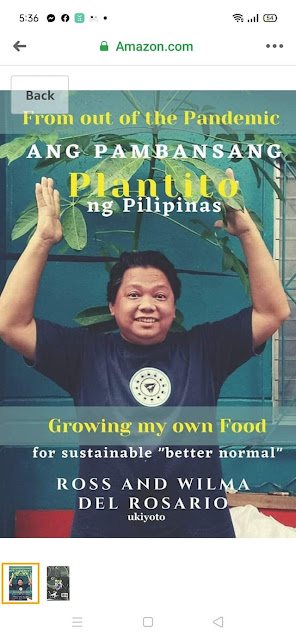Wazzup Pilipinas!?
In a powerful call to action on World No Tobacco Day (WNTD) 2025, two of the country’s leading health advocates—Action on Smoking and Health (ASH) Philippines and the Philippine College of Chest Physicians (PCCP)—have united in an urgent appeal to Congress: Pass the Standardized Packaging of Tobacco and Electronic Smoking Devices Act of 2025. The proposed bill aims to silence the seductive marketing of tobacco and vapes by mandating plain, standardized packaging—an evidence-backed move that has proven effective in many countries.
This year’s World No Tobacco Day theme, “Unmasking the Appeal,” rips the veil off the manipulative tactics long employed by the tobacco and vape industry. And for ASH Philippines and the PCCP, the time for polite persuasion is over. They demand swift legislative action before more lives are lost.
“We cannot allow packaging to deceive our youth into addiction,” declared Dr. Maricar Limpin, Executive Director of ASH Philippines. “This bill is about saving lives. Every day of delay allows the industry to continue targeting children with colorful lies. Standardized packaging works—it sends a message: no more manipulation, no more lies.”
A Medical Frontliner’s Stand: “We See the Damage Every Day”
At a ceremony this morning at the Lung Center of the Philippines, the World Health Organization honored the Philippine College of Chest Physicians with the World No Tobacco Day 2025 Award—a recognition of its decades-long battle against tobacco use. The PCCP has been instrumental in tobacco control efforts, from crafting the Clinical Practice Guidelines for Smoking Cessation to leading anti-vape campaigns like the “Beat The Vape” movement.
“We see the damage tobacco and vaping cause every day,” said Dr. Jubert P. Benedicto, MD, FPCP, FPCCP, President of the PCCP. “The lung insults are alarming and spare no one. Standardized packaging will help deglamorize these products and discourage young users before they become our next critical care patients.”
For frontline pulmonary doctors, tobacco and vape-related illnesses are not theoretical—they are daily tragedies. And the patterns are all too familiar: the deceptive glitter of packaging leads to early experimentation, which spirals into addiction, disease, and in too many cases, death.
The Industry’s Playbook: Lies Wrapped in Color
This year’s WNTD theme lays bare the industry's most insidious tricks, including:
Flashy packaging and flavored variants engineered to attract teens.
False narratives about “less harmful” vape alternatives.
Digital marketing and influencer campaigns masquerading as lifestyle choices.
The Standardized Packaging Bill—also known as the Plain Packaging Bill—takes direct aim at these tactics by:
Removing all brand logos, colors, textures, and promotional elements
Mandating uniform Pantone 448C brown packaging—the world’s ugliest color, chosen for its deterrent effect
Enforcing 90% front-and-back graphic health warnings
Applying the same rules to both cigarettes and vapes
Plain packaging is not a novel idea. It’s been a public health triumph in countries like Australia, Canada, and the UK—where youth smoking rates dropped significantly after implementation. But in the Philippines, the industry has continued to dress poison in pretty wrappers, enabled by a lack of legislative teeth.
Congress: The Clock Is Ticking
ASH Philippines and the PCCP are now calling on the Senate Committee on Health and the House Committees on Health, Youth, and Trade to urgently schedule hearings and prioritize the bill in the new legislative calendar.
They urge long-time tobacco control champions such as Senator Pia Cayetano, Senator Risa Hontiveros, and Representative Anna York Bondoc to pick up the mantle once more.
“We are standing at a critical junction,” said Dr. Limpin. “This is not just a health bill—it’s a protection bill. It shields our youth, supports our medical community, and exposes an industry that thrives on addiction.”
About the Frontliners of the Fight
ASH Philippines is a national civil society organization advocating for a tobacco-free future through science-based policy and community-driven initiatives. Its legacy includes championing the Sin Tax Reform Law and national smoke-free ordinances.
The Philippine College of Chest Physicians (PCCP) is a respected medical society representing the country's pulmonologists. PCCP has been a relentless force in promoting lung health, offering medical training, and crafting public health interventions grounded in clinical reality.
Plain packaging is not about aesthetics—it’s about survival.
As the country reflects on World No Tobacco Day 2025, the message is crystal clear: Unmask the lies. Strip away the appeal. Protect the next generation.
Congress holds the pen that can rewrite the future. Will they choose profit—or public health?
Let the vote show where their loyalty lies.















.jpg)



















 Ross is known as the Pambansang Blogger ng Pilipinas - An Information and Communication Technology (ICT) Professional by profession and a Social Media Evangelist by heart.
Ross is known as the Pambansang Blogger ng Pilipinas - An Information and Communication Technology (ICT) Professional by profession and a Social Media Evangelist by heart.






.jpg)




